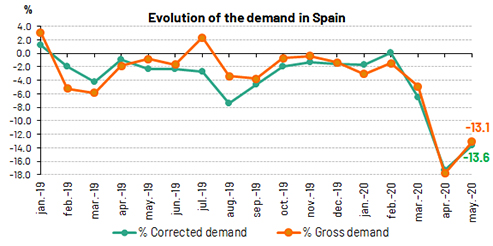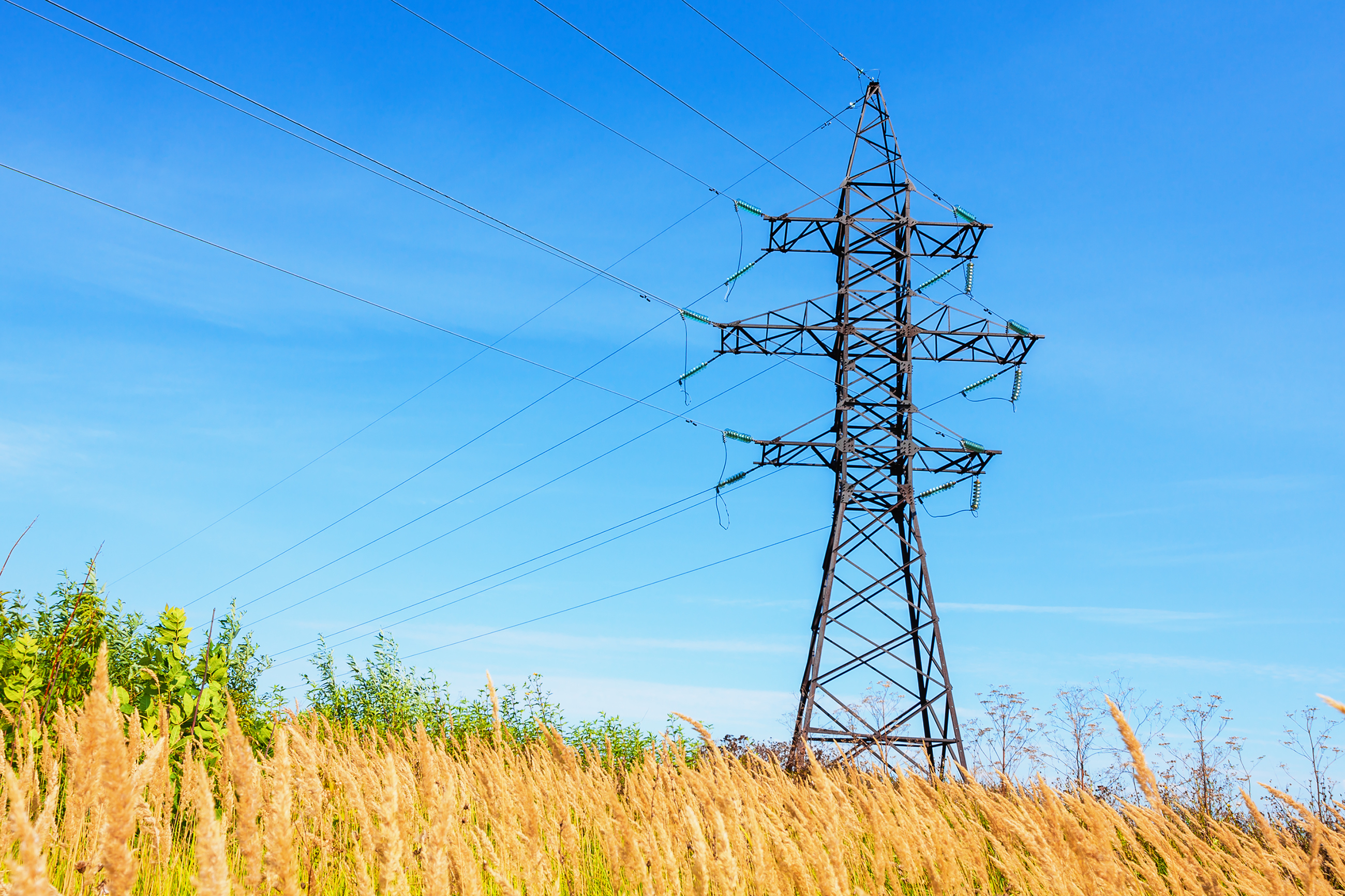For 40 years, we've been driving our country's economic and social progress. Four decades shaping Spain.
Demand for electricity in Spain falls 13.1% in May
- 52.5% of the monthly generation came from renewable sources and 70.8% came from technologies that do not emit CO2 equivalent.
- The demand for electricity in the Balearic Islands fell by 31.3% and in the Canary Islands by 18.8% compared to the same month in 2019.

Red Eléctrica de España has published the demand for electricity corresponding to the month of May, the second complete month under the state of emergency caused by the COVID-19, which saw the beginning of de-escalation and, consequently, an increase in economic activity. In this context, the national electricity demand for May is estimated at 18,366 GWh, 13.1% less than the figure recorded for the same month last year. After factoring in the seasonal and working patterns, the figure is 13.6% lower than in May 2019. This decrease is slightly less than the one registered last April, when the national demand was 17,003 GWh, that is, 17.8% less than the same month of the previous year.

The demand in the first five months of 2020 is estimated at 101,010 GWh, 7.8% less than in 2019. In this case, after taking into account the seasonal and working patterns, demand is 7.7% lower than in the same period of the previous year.
In May, and according to current estimates, generation from renewable energy sources accounted for 52.5% of production. From January to May, renewable generation reached 46.6% of the total electricity generated. May becomes the third month in the last decade to achieve the highest rate of renewable generation, only surpassed by that recorded in February 2014 (55.7%) and March 2018 (54.7%).
This month, 70,8% of electricity generation came from technologies which produce zero CO2 equivalent emissions.
According to the latest information, wind power production in May reached 3,968 GWh, which is 15.2% less than the same period last year, and accounted for 21.9% of the total production in Spain.

The demand for electrical energy falls 12.5% in the peninsular electricity system
In the peninsular electricity system, the electricity demand for May is estimated at 17,417 GWh, 12.5% less than the figure recorded for the same month last year. After factoring in the seasonal and working patterns, the demand is 13% lower than in May 2019.
The peninsular demand for electrical energy in the first five months of 2020 is estimated at 95,655 GWh, 7.7% less than in 2019. In this case, after taking into account the influence of seasonal and working patterns, demand was 7.6% lower than in the same period of the previous year.
During this month and according to current estimated data, 54.5% of peninsular generation came from renewable energy sources and 73.8% was obtained using technologies which produce zero CO2 equivalent emissions. Furthermore, wind energy in May stood at 3,894 GWh, a figure that is 15% below that registered in May last year, and contributed 22.6% to the generation mix.
The demand for electrical energy in May decreased 31.3% in the Balearic Islands and 18.8% in the Canary Islands
In the Balearic Islands, the demand for electricity in May is estimated at 327,927 GWh, a value that is 31.3% lower than that recorded in the same month last year. After having factored in the influence of seasonal and working patterns, the figure decreased by 32.6% with respect to May 2019. The demand of the Balearic Islands during the first five months of 2020 is estimated at 1,912,726 GWh, 15.1% less than in 2019.
Combined cycle, with 77.2% of the total, was the leading source of electricity generation in the Balearic Islands, whereas renewable technologies, which produce zero CO2 equivalent, accounted for 7.6%. For the fifth consecutive month, coal-fired generation was not used to produce any MWh in the Balearic Islands' electricity system.
Regarding the Canary Islands, demand for electricity is estimated at 588,254 MWh, which is 18.8% less than that recorded in May 2019. After having factored in the influence of seasonal and working patterns, the figure decreased by 18.5% with respect to the same month in 2019. So far in 2020, overall demand in the Canary Islands is estimated at 3,280,162 MWh, a decrease of 8.8% compared to the same period last year.
During May and according to current estimated data, combined cycle was the leading technology in the Canary Islands generation mix, with a contribution of 39.9%. Renewables and zero-emission technologies accounted for 16.8% of the generation on the Canary Islands.
Consult our Daily balance report for more information on the National, Peninsular, Balearic Islands and Canary Islands electricity systems as at the close of May.












